Historic background
Weaving wool or linen for clothing on a warp-weighted loom has a very long history. The first comprehensive study of this type of loom from archeological evidence and literature available to her at that time was given by Marta Hoffmann in 1964. Since then many other researchers have contributed to a further understanding in the use, history, products, and living history of this ancient loom. I particularly like a recent publication by Hildur Hákonardóttir, Elizabeth Johnston and Marta Kløve Juuhl that tells the story of three women who through six years of work and research contributed an extensive first hand knowledge of weaving on a warp-weighted loom. It also serves well as a reference to research that has been published since Marta Hoffmann’s book.
Most of our hands-on knowledge of Viking age fabrics and garments derives from textile fragments found in graves. There are very few well preserved remains of tunics from the Viking age. The two most extraordinary exceptions are of a whole tunic found at the edge of the recently retreated Landbreen glacier in Oppland County, Norway and the greater part of tunic found near the town of Viborg in the center of Jutland in Denmark. The first one was found in 2011 by archaeologists from Oppland’s Glacier Archaeology Rescue Program. They discovered a crumbled-up piece of textile approximately 0.58 by 0.29m in size in a pit at the upper edge of the ice patch exposed by the thawing of the glacier (Figure 1).
Figure 1: The Lendbreen tunic in situ.
Closer examination revealed a whole tunic made from wool and woven in diamond twill. The fabric is partly bleached where exposed to the sun and wind (Figure 2). Radiocarbon dating shows that the tunic was made between AD 230 and 390. The tunic is relatively short and constructed from a simple cut. The chest girth measures approximately 1.08m. By modern size standards, the tunic would thus fit a slender man, 1.7–1.76m in height.
Figure 2: The front of the Lendbreen tunic. Museum of Cultural History, University of Oslo.
The second one was found during the Viborg stiftsmuseum’s excavation near the town of Viborg in the center of Jutland in Denmark in 1984/85. The excavation site was located on the shore of Søndersø, which was inhabited from about 1000 until about 1300 AD. The fabric fragments (Figure 3) were found in a pit that most likely was a post hole. They were dated to the 11th century by stratigraphical analysis of the pit. The damp conditions at the Søndersø site favored preservation of organic materials and although the linen shirt is not preserved in one piece, it was still an extraordinary find.
Figure 3: The preserved parts of the front (left) and the back (right) of the shirt.
Fiber and weaving analysis shows that the Viborg shirt was made of single ply Z/Z-spun natural linen thread, woven in tabby weave with a density of about 20/12 per cm. The warp thread is a little thicker and somewhat more tightly spun than the weft thread . Analyses of the fabric fragments and the seams lead to the following reconstruction (Figure 4): A rather slim-fit poncho without seams on top of the shoulders, a skirt that is open on both sides and a neck lining that is continued into two ribbons for tying. The upper part of the shirt has a band, which is radially stitched to the outer garment. It is presumed that the shirt had long sleeves.
Figure 4: Reconstruction of the Viborg shirt.
Recreating the Viborg shirt
The fact that the Viborg shirt was woven from linen fabric and dated more closely to my persona’s time frame tipped the balance in favor of recreating this shirt rather than the Lendbreen tunic. I started setting up my warp-weighted loom to weave fabric enough for a shirt that will fit me based on the pattern reconstruction as presented by Mytte Fentz (Figure 5). Given my chest size of 23 inch and the maximum weaving width of my loom of about 3 feet, I decided to warp the loom for a width of the widest piece of the pattern. Allowing for seams, shrinkage after washing and possible narrowing of the warp during weaving, I created a warp with a width of 28 inch. I then compensated for the need of the remaining pieces by creating a longer warp.
I bought unbleached natural single ply z-spun linen thread in two thicknesses, 12/1 for the warp and a slightly thinner 20/1 for the weft. A small sample test weave resulted in a warp count of 17 threads per cm and a weft count of 8 threads per cm, reasonably close to the 20/12 per cm in the extant piece.
Figure 5: The reconstructed pattern for the Viborg shirt.
Warping the Warp Weighted Loom
I created a tablet woven starter band on ten tablets. The warp of the starter band was the same 12/1 linen thread as used for the warp of the fabric. At each turn of the tablets, I passed a loop of the 12/1 linen thread through the shed. The weft of the started band becomes the warp for the loom. One advantage of having two threads in each shed in the starting border is a closer warp. Another is that the ball of yarn that forms the weft of the starting border does not have to pass through the shed. Instead a loop is pulled from the cone of yarn and passed through the shed and around a series of pegs, while the cone itself remains where it is. Each loop is wound around pegs to a length equal to the desired length of fabric plus a margin for the loom waste and shrinkage after washing. I turned the cards in sets of 25 picks. After each set, I cut the loops of the threads at the last peg and split them in two bundles. I made sure to wind the threads around the last peg in the same direction for each pick. So after cutting the loops, the two bundles split naturally into the two parts that form the natural shed of the warp.
Warping setup (left) and half completed starter band (right).
Next, I transferred and secured the finished starting border to the cloth beam. First, I tied the band firmly in place by threading a 12/1 linen cord through the selvage side of the band and the holes in the cloth beam. Next, I tied additional loops at a closer spacing to prevent sagging of the header band due to the fairly high tension in the warp threads once the weights were attached.
The starter band secured to the cloth beam.
After transferring the warp to the loom I knitted the heddles for tabby weave. You can tie each heddle individually, but it is more convenient to knit continuous heddles. I placed a helper rod behind the warp to ensure equal length heddles and knitted the heddles by looping around each thread of the back warp around the heddle rod and the helper rod, making sure to pass each end of the loop between the same two threads of the front warp.
Knitting the heddles.
Finally, I attached the loom weights to the warp and created the spacing cords. The loom weights were made from unfired clay. They are about 320 gram each with minimal weight variation. I started out with 25 warp threads tied to each loom weight, but found the tension in the warp threads to be a bit low for a good shed. So I reduced the number to 20 threads per loom weight. Since the total warp length is significantly longer than the height of the loom, the surplus warp was braided. To make tying and untying to feed more warp after weaving a bit more efficient, the braids are not knotted directly to the loom weights directly, but instead each one is secured by a loop, which is in turn attached to the loom weight. After the weights were tied to the bundles, the warp was split into the natural shed. I tied a crochet chain across the back threads and after that a similar one across the front threads. This so-called spacing cord helps to distribute the individual warp threads evenly over the full width of the weave. Each time the cloth is rolled onto the cloth beam, the spacing cord will slide down along the warp threads to just below the shed rod.
Attaching the weights.
Knitting the crochet spacing cord.
Weaving
With the loom warped it was time to start weaving. The tricky part is figuring out how much weft to give in each pick to prevent the weave getting narrower and narrower as you go along. I loosely looped the weft at each pick instead of pulling it tight. Too loose and you get loops in the weave, too tight and the fabric narrows. Right now the selvages are straight and the width is constant, but I have not woven enough to see if tightening becomes an issue. The selvages are straight so far. The other tricky part is how hard to beat the weft after each pick. Right now I beat it as tight as I feel comfortable doing resulting in a weft thread count that is just slightly lower than that in the extent piece.
The natural shed (left) and the counter shed (right).
The first two inches of fabric.
To be continued after weaving is complete 😀
Bibliography
Ejstrud, Bo (Editor) (2011) “From Flax to Linen - Experiments with flax at Ribe Viking Centre” Maritime Archaeology Programme, University of Southern Denmark.
Fentz, Mytte (1993) “Vikingeskjorten fra Viborg”, Viborg Stiftsmuseum
https://vk.com/doc-32206289_294592421?dl=971c82b3a61faf9e5f
Fentz, Mytte (1987) “An 11th century linen shirt from Viborg”, translated by Maggie Mulvaney. This article appeared as "En hørskjorte fra 1000-årenes Viborg" in KUML 1987; Årbog for Jysk Arkælogisk Selskab.
http://www.forest.gen.nz/Medieval/articles/Viborg/VIBORG.HTM
Hoffman, Marta (1974) “The Warp-Weighted Loom: Studies in History and Technology of an Ancient Implement”, Robin and Russ Handweavers.
Hákonardóttir, Hildur, Johnston, Elizabeth, and Kløve Juuhl, Marta (2016) “The Warp-Weighted Loom”, Randi Andersen and Atle Ove Martinussen (Editors).
Petty, Christina (2014) “Warp Weighted Looms: Then and Now Anglo-Saxon and Viking Archaeological Evidence and Modern Practitioners”, Ph.D. thesis, University of Manchester, Manchester, UK
Plunkett, Steven J. (1999) “The Anglo-Saxon Loom from Pakenham, Suffolk” Proceedings of the Suffolk Institute of Archaeology and History, Volume XXXIX Part 3.
Priest-Dorman, Carolyn (1997) “Viking Tunic Construction”
http://www.cs.vassar.edu/~capriest/viktunic.html (last updated 04/17/97).
Priest-Dorman, Carolyn (2001) “Weaving on the Warp-Weighted Loom: Some Source Materials” http://www.cs.vassar.edu/~capriest/wwloom.html (last updated 06/17/02).
Uusitalo, Ulla-Mari (last accessed at 10/25/17) “Male linen shirt of 11th century, from Viborg, Denmark”
http://utankamari.net/wp-content/uploads/2011/06/viborgshirt.pdf
Vedeler, Marianne and Bender Jørgensen, Lise (2013) “Out of the Norwegian Glaciers: Lendbreen – a tunic from the early first millennium AD”, Antiquity, Vol. 87 No. 337 pp. 788–801.
Verberg, Susan (2016) “A fencing tunic based on the 11th century Viborg Shirt”
https://www.academia.edu/27845542/An_SCA_approved_fencing_tunic_based_on_the_11th_century_Viborg_Shirt
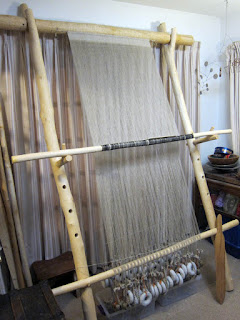

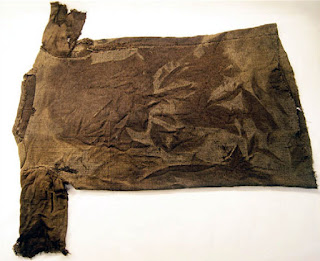



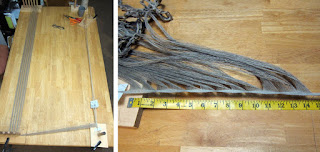



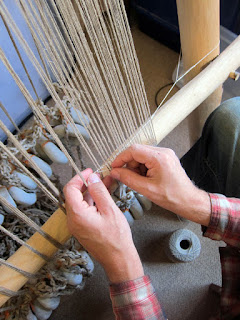
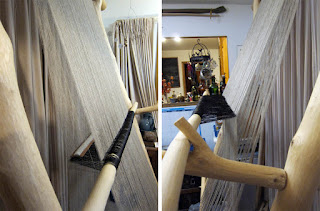
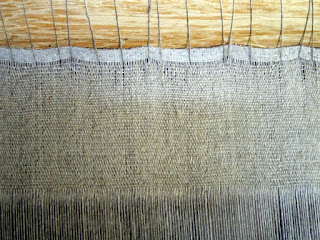




No comments:
Post a Comment